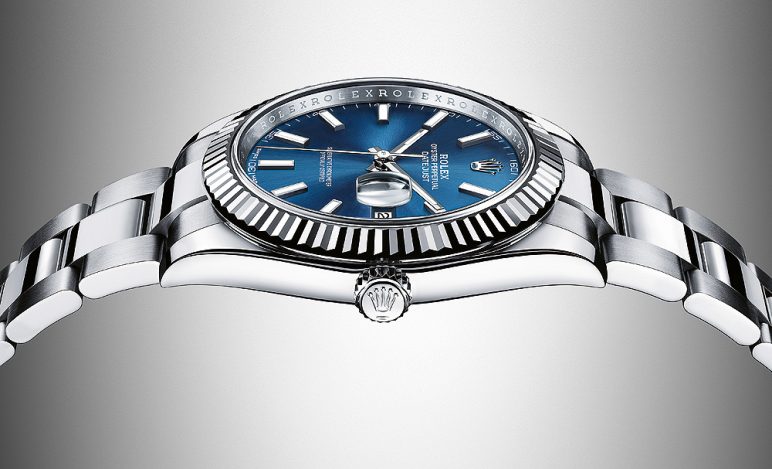Water resistant, automatic winding, chronometer-certified, a date window
— in 1945, the Replica Rolex Datejust was the first watch that could offer all this — just about perfect. Nevertheless, Rolex has continued to improve upon it.

What does the perfect watch look like? Automatic winding, three hands, a date display, accurate, sturdy and water resistant — you really don’t need more than that. No wonder the first watch with just these characteristics was a great success: the Rolex Datejust, which first appeared in 1945. Perfection is often achieved in small steps and so it was with Rolex. The brand introduced the water-resistant Oyster in 1926 and added the Perpetual automatic movement in 1931. The perfect watch for everyday wear was then created with the Oyster Perpetual Datejust.
Rolex founder Hans Wilsdorf not only had a feel for the needs of the market; he also knew how to position his brand and its innovative technology to be both interesting and eye-catching. The names he chose were ingenious: the waterproof Oyster case, the Perpetual movement (to describe the movement of the wrist that continuously winds the mainspring) and the Datejust model (to highlight the instantaneous advancement of the date at midnight).

At the beginning of 1945, the Datejust was only available in gold. And this was also its 40th anniversary year, so Rolex named the metal bracelet developed for the Rolex Datejust luxury watch the “Jubilee” bracelet. By the end of the 1940s, the company began producing the Datejust in steel, which was powered by the Rolex 730 automatic movement in these early years.

The design underwent slight changes at the beginning. Despite its exceptional wearability, Rolex did not rest on its laurels and continued making improvements to the Datejust. In 1954, Rolex added the famous Cyclops lens magnifier for the date. And beginning in 1955, the date advanced in the blink of an eye. In 1957, the new automatic movement 1065 allowed for a thinner case. Collectors know the watches built before this time as “Bubble Backs.”

The well-known design with its obelisk hands, fluted bezel and rectangular index hour markers has been in place since the early 1950s. In 1965, automatic movement 1570 was selected for the Rolex Datejust Replica Watch and in 1972, a hack mechanism allowed for the precise setting of the time. In 1974, Rolex was the first manufacturer to use a scratch-resistant sapphire crystal, and in 1977, Caliber 3035 with its red anodized, friction-reducing wheels added the Quickset date. In 1977, there was also an Oysterquartz Datejust with a quartz movement that was developed in-house by Rolex.

In 1988, the Datejust began to be powered by automatic Caliber 3135 with a balance bridge and an improved self-winding mechanism. The case size of the original version remained unchanged with a 36-mm diameter. At that time, there were only two smaller versions: 31 mm and 26 mm. While men once wore the 31-mm model, eventually even the 36-mm version seemed too small. Although Rolex long resisted the move to larger Datejust models, in 2009, the company introduced the 41-mm Datejust II, which was replaced in 2016 by the Datejust 41, which was same size but had a new movement and updated case.








